
BEZALEL ACADEMY OF ARTS AND DESIGN, JERUSALEM, ISRAEL – FIRST ESTABLISHED ON ABYSSINIA (ETHIOPIA) STREET, JERUSALEM, IN 1906

Bezalel Academy of Arts and Design was first established as an arts and craft school in Jerusalem in 1906 by the Lithuanian Jewish painter and sculptor, Boris Schatz (1866-1932). Schatz had been one of the founders of the Royal Academy of Art in Sofia, Bulgaria, and in 1905 he had presented a proposal to Theodor Herzl and the Fifth Zionist Congress for the establishment of an art institution in Ottoman Palestine (the Land of Israel).
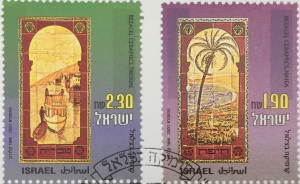
Schatz who had been born in Varniai, Kovno – which was then part of the Russian Empire – studied art at the School of Drawing in Vilna (now Vilnius, capital of Lithuania). He then taught art in Warsaw, before moving to France and later to Bulgaria.

The art institution that Schatz envisaged for the nascent Israel would create a national style, blending European artistic traditions and the Jewish design traditions of the East and West, and integrating the style with local culture. The new institution would be named after Bezalel Ben Uri, the chief artisan of the biblical Tabernacle in charge of building the Ark of the Covenant.
[KFF – LABEL – BEZALEL Old Bezalel building shown on a KKL Keren Keyamet label]
The school was underwritten by a board of Jews in Berlin, and steered from there by an executive committee. Also on the establishing committee sat illustrator and printmaker Efraim Moshe Lilien (1874-1925) – called the first Zionist artist – who accompanied Schatz to Jerusalem.
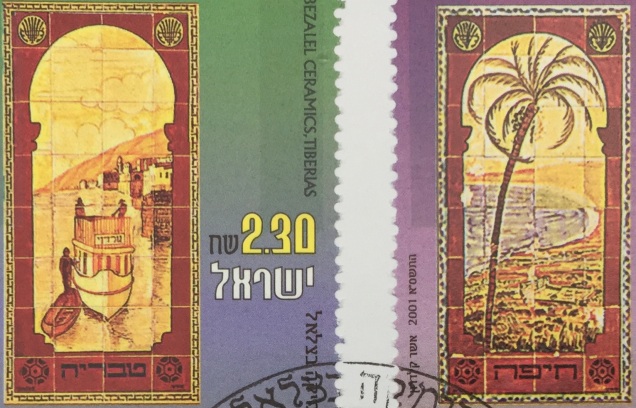
Bezalel opened in rented premises on Abyssinia (Ethiopia) Street, Jerusalem, and in 1908 it moved to buildings on what has since become Jerusalem’s Shmuel Hanagid Street. The Bezalel site, surrounded by a crenelated stone wall, had been constructed in the 1880s and had been purchased from its wealthy Arab owner by the Jewish National Fund.

Bezalel’s first class consisted of 30 young art students from Europe. Because they had come from various different countries, with no common language, the students were taught Hebrew by Eliezer Ben Yehuda (1858-1922) the newspaper editor and Hebrew lexicographer who had become the driving force of the revival of the language for the emerging nation. As well as the traditional subjects of sculpture and painting, the school offered workshops for the production of decorative art objects in silver, leather, wood, brass, and fabric.

Schatz believed that concentration on weaving, silversmithing, ceramics and applied arts, and focussing on the value of manual work conformed to the basic principle among the Yishuv (the Jewish community of pre-State Israel) i.e. the ideal of halutziut (pioneering). Students were trained less in fine arts than in crafts. On graduation, students worked in bare, simple workshops, a reflection of the economic situation of the time.

The output and style of art emerging from Bezalel in these early years – its fusion of oriental art and art nouveau – became known as the ‘Bezalel school’ .
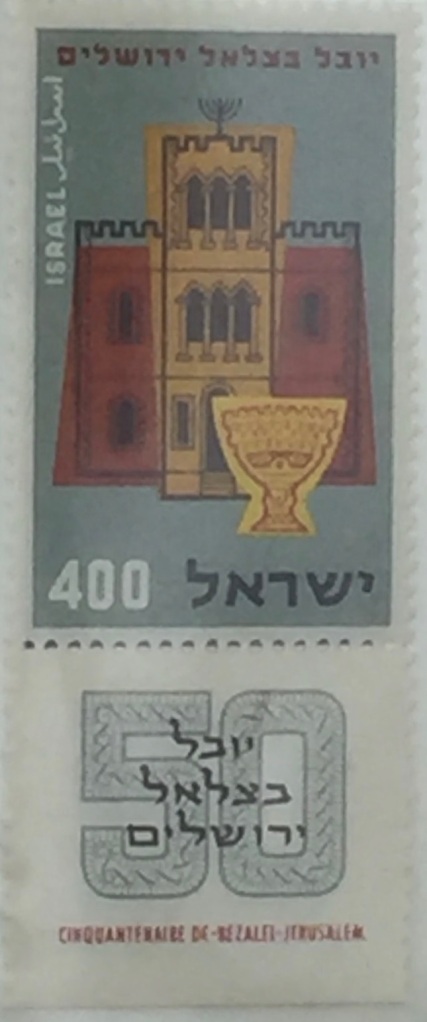
Bezalel was very successful until the outbreak of World War I when it had to sever connections with the executive committee in Berlin and with its patrons and supporters across Europe. From 1914, the institution faced enormous political, financial and management difficulties, and then in 1917 it closed down before the Allies entered Jerusalem. That year, Schatz himself had been deported by the Turks.

At the end of the war, Schatz returned from exile in Damascus, Tiberias and Safed, and Bezalel re-opened. Ten years later however, in 1929, it had to close down temporarily due to financial difficulties. Schatz travelled abroad to raise funds for the school, but died penniless while fund-raising in the USA – passing away in Denver, Colorado, on 23 March 1932. On the return of his body to Jerusalem, he was buried on the Mount of Olives, Jerusalem.

On the rise of Adolf Hitler in Germany, the Bezalel executive board again raised funds for the institution and selected book illustrator Josef Budko (1888-1940) to re-open the school as its director. Budko, who had been born in Plonsk, Poland, had, like Schatz, studied art in Vilna (Vilnius) before going to Berlin in 1910 to study at the city’s School of Arts and Crafts, had fled Germany in 1933.

At Bezalel, Budko placed an emphasis on graphics and the ornamental use of the Hebrew alphabet.
From the mid-1930s, the school attracted many teachers and students from Germany, many of them from the Bauhaus school shut down by the Nazis. Among the artists and teachers were Jakob Steinhardt (1887-1968) and Mordecai Bronstein-Ardon (1896-1992), who would both succeed Budko as directors of the school – Bronstein-Ardon, 1940-52, and Steinhardt, 1954-57. Budko’s tenure would last until 1940.

On the establishment of the State of Israel and after the the War of Independence, the task of integrating the school into the national cause was regarded as an important contribution to the fledgling state. The teaching of arts and crafts – as a subject in schools generally – began to be highly regarded in the new country, and Bezalel saw its role as one of expanding the teaching of fine arts in Israel and of becoming Israel’s premier academy of arts.

Bezalel became the first organization to be awarded the Israel Prize, winning in 1958 – the 10th Anniversary of Israel’s Independence – for painting and sculpture.
In 1969, the school became an academy, thanks to the efforts of Dan Hofner, director 1965-79, and from then on Bezalel would then be known as the Bezalel Academy of Arts and Design.

In 1982, Bezalel entered into an agreement with the Hebrew University of Jerusalem and the Council for Higher Education for the construction of a building within the Hebrew University’s Mount Scopus campus. This led to the beginning of a detailed planning process, and by 1986 three departments – Environmental Design, Jewelry Design and Photography – had started teaching programs at the Mount Scopus campus, and the Bezalel academic secretariat, the Dean’s office and student union office had moved there too, along with Theoretical Studies.
By 1990, all of Bezalel’s departments and administrative offices had moved to the new campus on Mount Scopus.

In 1993, Bezalel’s historic building in central Jerusalem became the Architecture department, and in order to meet the needs of the department the first phase of the renovation of the building began in 2000.
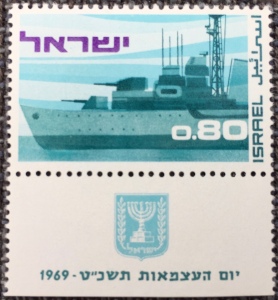
Today, Bezalel Academy of Arts and Design teaches: policy and theory of the arts; architecture; fine arts; screen-based arts (animation, video); ceramic and glass design; industrial design; urban design; fashion and jewellery design; photography; visual communication; and, visual and material culture.
Since its inauguration in 2001, here has been a Bezalel extension in Tel Aviv.

Bezalel alumni include: Ya’akov Ben-Dov (1882-1968), born in Ukraine, photographer and a pioneer of Jewish cinematography; sculptor Ze’ev Ben-Zvi (1904-52), born in Poland, and director of Bezalel in 1952 just prior to his death; sculptor Yitzhak Danziger (1916-77), born in Berlin; Jacob Eisenberg (1897-1965) , an artist born in Pinsk; and painter and industrial designer Ze’ev Raban (1890-1970), born in Łódź, Poland.
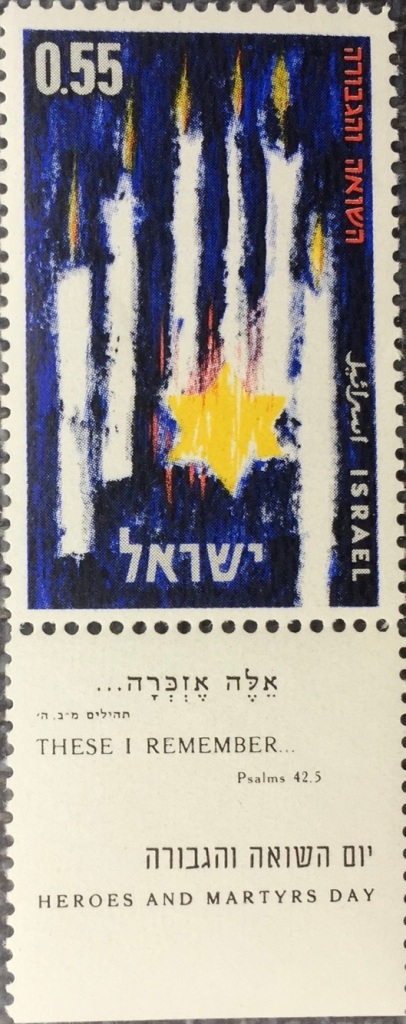
Numerous Bezalel alumni have gone on to contribute to the design and production of some of Israel’s postage stamp issue. These have included: Zvi Narkis (1921-2010), Friedel Stern (1917-2006), Asher Kalderon, Dan Reisinger, Aharon Shevo, Eliezer Weishoff, Yitzhak Yoresh, and Yaakov Zim, some of the designs of whom have been shown above.

If you have enjoyed this exploration of Israeli art cultural heritage through the country’s postage stamps, you may like to take a look at past November blog posts (our art cultural month). They offered descriptions of the work of Abram Games (November 2018) and Efraim Moshe Lilien (November 2017).
Resources exploited for the blog post this month include: (1) the website of Bezalel Academy of Art and Design [accessed 14 October 2019]; (2) Meir Ronnen, ‘When Budko met Bialik’, Jerusalem Post, 14 September 2006; and (3) the website of Israel Philatelic Federation